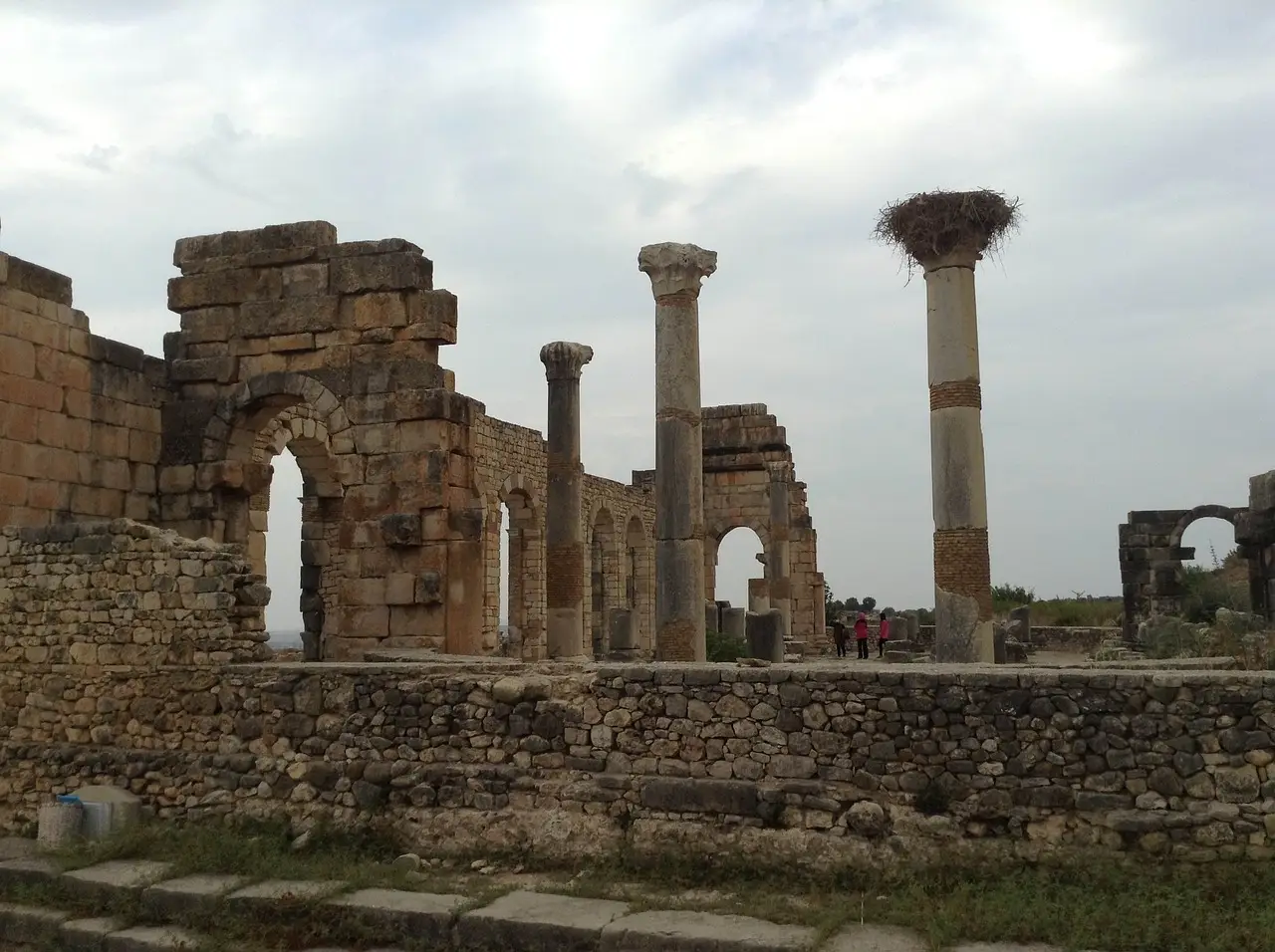Volubilis: Roman Ruins in Morocco

Volubilis, near the city of Meknes, is an ancient Roman city and one of Morocco’s most captivating historical sites. It’s a must-see for history lovers and travelers wanting to experience Morocco’s rich past in a serene, scenic setting.
A Snapshot of History
Volubilis (Locals call it Walili) began as a Berber settlement, strategically positioned in a fertile region that became central to trade and agriculture. Around 25 BCE, it was annexed by Rome and transformed into a thriving provincial city, renowned for its olive oil production, which was exported across the empire. The city reached its peak in the 2nd and 3rd centuries CE, with grand architecture and public spaces reflecting its prosperity. Following Rome’s withdrawal, Volubilis became a local kingdom until its decline after a devastating earthquake in the 18th century. Today, it stands as a UNESCO World Heritage Site, preserving centuries of history amidst stunning landscapes.
What to See at Volubilis
- Triumphal Arch: This grand arch commemorates Emperor Caracalla and offers stunning photo opportunities.
- Roman Mosaics: Beautifully preserved mosaics like those in the House of Orpheus show Roman life and mythology.
- Basilica and Forum: The political heart of the city, with impressive columns and open spaces.
- Olive Presses: Evidence of Volubilis’ role as an olive oil production hub.
- Residential Villas: Explore the remnants of wealthy Roman homes, complete with courtyards and intricate designs.
Practical Information for Visitors
- Getting There:
- From Meknes: About 30 km (30-40 minutes by car or taxi).
- From Fez: Approximately 1.5 hours by car.
- Opening Hours:
- Open daily from 8:30 AM to 6:30 PM.
- Tickets:
- General admission: 70 MAD.
- Moroccan residents: 30 MAD (ID required).
- Kids under 12: Free.
- Guided Tours:
- Local guides are available for hire on-site (around 200-300 MAD) and provide valuable insights into the ruins.
- What to Bring:
- Comfortable Shoes: The site involves a lot of walking on uneven terrain.
- Sunscreen and Water: There’s little shade, especially in summer.
- Hat: For extra sun protection.
- Best Time to Visit:
- Spring (March to May) or fall (September to November) offers mild weather. Early mornings or late afternoons are cooler and provide soft lighting for photos.
Tips for Your Visit
- Restrooms are available near the entrance.
- Parking is secure and costs around 10 MAD.
- There’s a small café on-site, but bringing your snacks is wise.
Combine Your Trip
- Moulay Idriss Zerhoun: Just a 10-minute drive, this holy town is perfect for a peaceful stroll and a bite at a local café.
- Meknes: Explore the imperial city with its palaces, medina, and museums.
Travel back in time
Volubilis isn’t just a site of ancient ruins; it’s a vivid connection to the past. Walking through its grand arches, intricate mosaics, and well-preserved streets, you can almost hear the echoes of Roman merchants, farmers, and rulers who once thrived here. Set against the breathtaking backdrop of rolling hills, Volubilis blends history and beauty in a way that leaves a lasting impression. It’s a must-visit destination for anyone seeking to experience Morocco’s rich heritage and timeless charm.
Volubilis isn’t the only ancient gem in Morocco worth exploring. The Lixus ruins, located near the modern town of Larache, offer another fascinating glimpse into the past. Known as one of the oldest Phoenician settlements in North Africa.
Planning a trip to Volubilis? As your Local Advisor in Morocco, you can contact me for personalized travel advice, itinerary planning, and tips to make the most of your visit.











